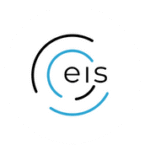Introduction
In an increasingly connected digital world, ERP and EDI integration has evolved from a back-office necessity into a strategic enabler for enterprise growth. As we move through 2025, businesses across sectors are embracing new integration trends that improve agility, reduce costs, and drive smarter decision-making.
Whether you’re in pharma, logistics, retail, or manufacturing – these trends offer a roadmap for building a more connected, future-ready organization.
1. Cloud-Native Integration Is Now the Default
The shift from on-premise to cloud-native ERP and EDI platforms is accelerating. Enterprises now prefer SaaS-based, fully managed integration models that offer scalability, speed, and cost-efficiency.
Why it matters:
Hosted solutions like those from EIS eliminate the need for infrastructure investments while delivering seamless upgrades, security, and 24/7 monitoring.
2. API-First + EDI: A Smarter Hybrid
Modern integration strategies are blending API-first architecture with traditional EDI to enable real-time data exchange. This hybrid model ensures faster workflows and improved partner collaboration.
Best practices include:
Choosing platforms that support both legacy EDI standards and modern APIs – allowing you to scale without breaking existing systems.
3. Industry-Specific Solutions Are the New Standard
From pharma regulations (DSCSA, FDA) to 3PL order visibility and retail compliance, industry-specific integration has become critical.
What to expect from your provider:
Pre-configured mappings, compliance readiness, and specialized workflows for each sector – something EIS delivers for pharma, 3PL, retail, and manufacturing clients.
4. Automation, Alerts & Analytics Built-In
Integration now goes beyond data movement – it must also provide insights. Businesses expect dashboards, real-time alerts, and automated exception handling.
With EIS:
You get analytics-driven portals that flag no-responses, chargebacks, and delays -empowering better decisions and reducing manual intervention.
5. Security and Compliance First
With rising data regulations, your integration platform must ensure encrypted communication, audit trails, and global compliance.
Essential features:
AS2/HTTPS protocols, HIPAA/GDPR readiness, document-level visibility, and role-based access. EIS embeds these into every hosted deployment.
6. Self-Service Portals for Greater Visibility
Trading partners now demand transparency. Web-based EDI portals give users access to transactions, POs, ASNs, and reporting – without needing IT intervention.
Why it matters:
Better collaboration, fewer disputes, and faster responses across your partner ecosystem.
7. Faster Onboarding, Shorter Timelines
Speed is critical. Prebuilt partner templates, automated mapping, and rapid deployment are now expectations – not luxuries.
How EIS helps:
With ready-to-use retailer and wholesaler mappings, you can integrate new partners in days – not months.
8. Outsourcing Integration Is a Strategic Edge
Managing EDI in-house can drain time and resources. Outsourcing to an expert provider like EIS delivers agility, cost savings, and round-the-clock support.
Benefits include:
- No infrastructure costs
- Scalable hosted architecture
- Proactive monitoring
- Built-in compliance
Conclusion: Integration That Powers Growth
Integration is no longer a background function – it’s a growth strategy. Companies investing in scalable, secure, and intelligent ERP/EDI solutions are gaining agility, speed, and competitive advantage.
If you’re ready to streamline operations, connect smarter, and scale faster – choose a partner who knows how to get you there.
Let’s Connect
Enable Info Solutions (EIS) is a trusted global provider of ERP and EDI integration solutions, tailored to your industry and business goals.
From cloud-hosted infrastructure to analytics dashboards and domain-specific expertise – we power your digital growth.
Contact us today to request a demo or explore our integration capabilities.

